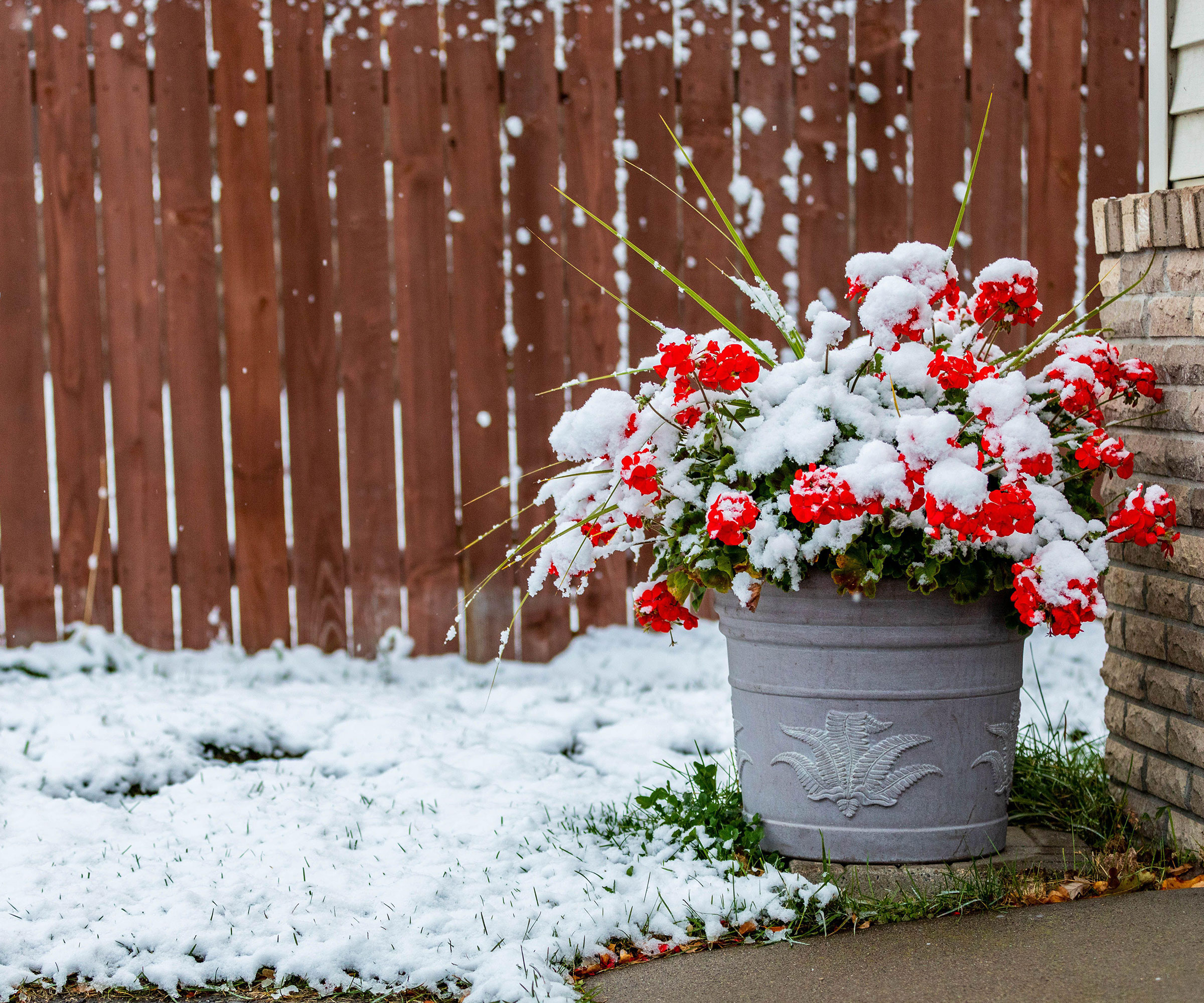Overwintering Geraniums: Best Winter Care So They Last For Longer
Taking the time for overwintering geraniums is one of the key ways to extend the longevity of your beloved plants. We show you how to keep them flourishing year after year

Mastering the art of overwintering geraniums is one of the best ways to guarantee that these versatile plants thrive for longer. Notable for their beautiful blooms, and often for their fragrance, it’s easy to see how these plants became so popular.
Geraniums are a gorgeous addition to containers and hanging baskets, as well as beds and mixed borders. So if you are new to growing geraniums, make sure you devote some time to the best geranium winter care so they can be returned to the garden in spring.
Overwintering Geraniums Made Simple
Geraniums (Pelargonium x hortorum) are grown as annuals in most parts of the United States, but they are actually tender perennials. They are hardy to USDA growing zones 10-11. However, with the proper geranium care in winter, you can help your favorite varieties survive the coolest months of the year – even outside their hardiness range.
Learning how to keep geraniums over the winter is easy. Saving geraniums for the winter can be done in three ways: overwintering in pots, storing as bare-root plants, and taking cuttings of existing plants. Below, we will explore each of these techniques in greater detail.
When to Overwinter Geraniums
Before considering how to overwinter geraniums, it’s wise to consider time frames. Shorter days and mild temperatures combine to help slow the plant’s rate of growth, as well as readying it for the winter dormancy period.
While overwintering techniques require different approaches, it’s best to begin preparing in mid to late summer or early fall. If you have some idea of which overwintering method appeals to you, this will help inform you as to the very best time to proceed.
Overwinter Potted Geraniums
To overwinter outdoor potted geranium plants, move them indoors before the arrival of the first fall frost. To grow their best, provide the plants with bright, indirect light. Geranium winter care for potted specimens includes regular, routine watering. Plants often become leggy over the course of the winter season, and are likely to require aggressive pruning before they’re reintroduced into the garden in the spring.
Sign up for the Gardening Know How newsletter today and receive a free copy of our e-book "How to Grow Delicious Tomatoes".
For a garden-planted geranium, you can dig up the plant and place it in a pot that can comfortably fit its rootball. It’s a good idea to prune the geranium plant back by one-third. Water the pot thoroughly and place it in a cool but well-lit part of your house. If the cool spot you have in mind does not have enough light, place a lamp or fluorescent light close to the plant. Keep this light on 24 hours. This continuous lighting wil help winter geraniums last through the chilly months. You may wind up with leggy geranium plants, but these can be corrected.

Overwinter Bare Root Geraniums
If you grow scented geranium (or pelargonium), these can be stored over winter as bare root plants. Geraniums will go into dormancy easily, meaning you can store them in a similar fashion to storing tender bulbs.To transition the plants to winter storage, dig or move them from the garden before the arrival of the first fall frost.
Rinse the excess soil from the roots and place each plant in a brown paper sack. Hang the plants upside down in your basement or garage. The plant’s stems and foliage will die back slowly, but its root system will remain healthy and vital through the storage period. Once a month, you can soak the roots of the geranium in water for an hour, then re-hang it.
Ideal storage conditions for overwintering geraniums are free of frost and range in temperature from 45-50°F (7-10°C). In the spring, replant the dormant geraniums in the ground, and they will spring back to life.
Take Some Geranium Cuttings
It’s easy to take cuttings to overwinter geraniums. Start by snipping several 3-4in (8-10cm) stem segments from the soft (green) part of the plant. Remove foliage from the bottom half of the cutting, leaving only one or two leaf sets. If you wish, dip each cutting into rooting hormone.
Arrange the cuttings into a moist, high-quality potting mix or vermiculite with plenty of drainage. Cover the planted cuttings with a humidity dome or a plastic bag to help regulate moisture levels and maintain ideal conditions as the cutting takes root. The cuttings should root in six-eight weeks. When they have rooted, repot them in potting soil. Keep them in a cool, sunny spot until they can go back outside again.
Taking cuttings from existing plants lets you multiply your collection. Just bear in mind that certain plant varieties have been patented and are not allowed to be propagated without special authorization.

How to Revive Geraniums Next Year
Depending on which method of overwintering geraniums you chose, the arrival of spring marks means growers can begin introducing plants back into the garden. Overwintered geraniums should be moved outdoors gradually by hardening them off. Those kept as potted plants are especially susceptible to damage caused by a sudden change in growing conditions.
Cuttings can also be moved to the garden in the same manner. Bare root plants can be potted into containers in late winter and moved to a warmer location to begin growing. They may also be planted into beds after the risk of frost has passed. Getting geraniums to last over winter will reward you with large, lush plants long before your neighbors have bought theirs.

Heather Rhoades founded Gardening Know How in 2007. She holds degrees from Cleveland State University and Northern Kentucky University. She is an avid gardener with a passion for community, and is a recipient of the Master Gardeners of Ohio Lifetime Achievement Award.

